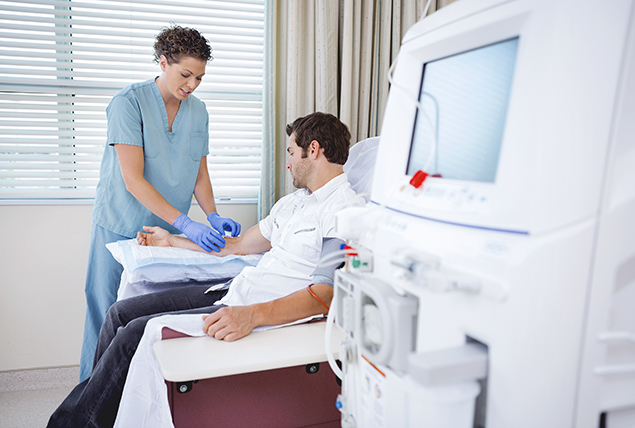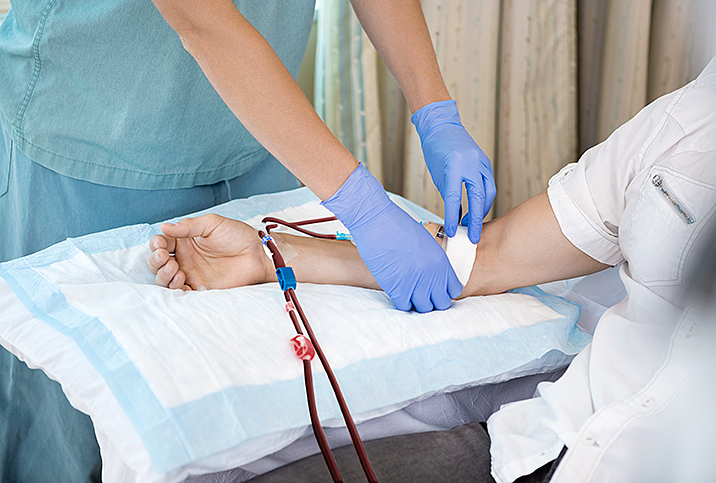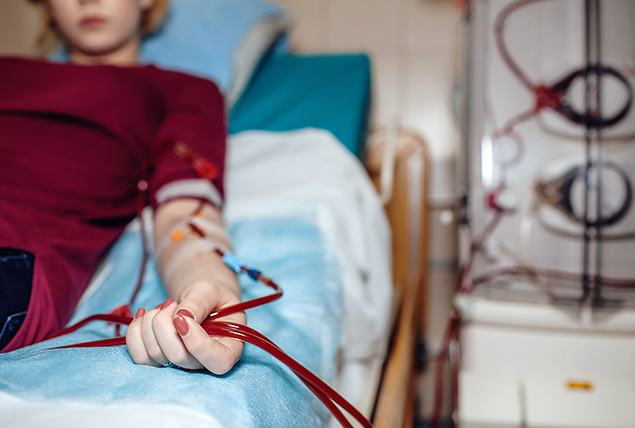Managing Your Life With Chronic Kidney Disease

The Centers for Disease Control and Prevention (CDC) defines chronic kidney disease (CKD) as a condition where the kidneys are damaged to the point that they cannot filter blood as well as they should. As a result, excess fluid and waste from blood remain in the body and may cause other health problems, such as heart disease and stroke.
It's estimated that more than 1 in 7 American adults suffer from kidney disease, and of those 37 million adults with CKD, as many as 9 in 10 may not be aware they have it.
Having kidney disease can pose a significant impact on your quality of life because the optimal function of kidneys is essential for many bodily functions.
Some common effects of kidney disease, according to the CDC, include:
- Anemia, which in turn can lead to fatigue and weakness
- Decreased sex drive
- Extra fluid deposits in the body, which can cause swelling of limbs, high blood pressure and shortness of breath
- High potassium levels in the blood can cause an irregular or abnormal heartbeat and sometimes lead to death
- Menstruation irregularities and infertility
- Nausea and loss of appetite
- Weakening of the immune system can increase the risk of infections
Although getting a kidney disease diagnosis can feel like it has an air of finality, all hope is not lost. Since early detection is critical to mitigating much of the damage, it also means it's possible to live a regular life after diagnosis.
Organizing your schedule with CKD
"While the kidney disease we're addressing cannot be cured, it can be managed," according to Oliver Tate Brooks, M.D., member of the American Kidney Fund's board of trustees and chief medical officer at Watts Healthcare Corp. in Los Angeles.
Some lifestyle changes need to be made as soon as possible.
Someone with kidney disease is more susceptible to developing high potassium, high phosphorus, gout or anemia. Managing the levels of these nutrients through a kidney-friendly food plan is an essential part of managing the symptoms and stopping the progression, Brooks said.
Additionally, being active and limiting or stopping the use of alcohol or tobacco products can help keep kidneys healthy or slow down further damage.
Treatments at the mid- to late stages of CKD can be time-consuming as it's likely the patient will regularly visit the hospital for dialysis treatments. In-center hemodialysis treatments are typically scheduled three times per week for two to four hours. That's a significant chunk of time to account for in a regular week, without considering travel time for the appointments and time spent cooling your heels waiting for your appointment to begin.
"Having more time to be socially active is one of the many reasons that a person with kidney disease may choose home dialysis options," Brooks noted.
Typically, dialysis treatments at home give you more time, energy and flexibility with your diet. Home hemodialysis certainly takes up less time per session but is usually required on a more frequent basis.
Partners should be aware that CKD can take a serious mental and physical toll, and one of the most common side effects of kidney disease is depression.
"A person with kidney disease could have anxiety and depression to manage as well, in addition to fatigue from dialysis treatments and/or issues with sexual performance," Brooks said. "So it is important to provide a partner with kidney disease with support, understanding and patience."
Prevention and aftercare
Brooks said that in addition to lifestyle changes—such as physical activity, healthy eating habits and monitoring blood sugar and cholesterol levels—more basic and obvious component to preventing kidney disease is to ensure your doctor is screening for it. If members of your family have a history of kidney disease, diabetes or high cholesterol, you should suggest your healthcare provider signs you up for an annual screening.
Screening most often includes a complete bloodwork count panel and/or a urine test. If bloodwork reveals elevated levels of blood urea nitrogen or creatinine, or the urine test reports elevated levels of protein, these can each be separate indicators of CKD.
Kidney disease progresses in stages, from 1 to 5. In stage 1, the damage to your kidneys is mild. You have a normal estimated glomerular filtration rate (eGFR) of 90 or greater, but tests indicate there is protein in your urine. Stage 5 CKD means your kidneys are close to failure or have already failed. In this much more serious stage of the disease—known as end-stage renal disease (ESRD) or end-stage kidney disease (ESKD)—you need to begin dialysis or consider a kidney transplant. At this stage, life expectancy is between five and 12 years, although transplant patients have been known to live 20 years or more.
The sooner kidney disease is caught, the better your chance of slowing it before it progresses to kidney failure.
Another important component to controlling CKD is determining if you have high blood pressure, and if so, keeping it under control. Using electronic devices you can purchase cheaply in your local pharmacy (less than $50), it's relatively easy to monitor your blood pressure at home, a habit that's recommended.
Resources for patients and their caregivers
Since kidney disease is extremely common in America and is the ninth-leading cause of death, it's important to note there are several recommended sites online that provide free resources you may need for both research and contacts.
The CDC and Mayo Clinic each have comprehensive educational guides to the disease on their websites, with the latter allowing you to request appointments through the website.
The American Kidney Foundation has numerous resources available to help patients and their caregivers manage kidney disease. One of those resources that deserves a special mention is the Kidney Kitchen, dedicated to helping people with kidney disease navigate healthy eating with recipes, cooking demonstrations and downloadable guides. There is also a wealth of information on specific kidney-related diseases such as lupus nephritis, cystinosis, Fabry disease, IgA nephropathy and more.
Another organization to note is the American Association of Kidney Patients, home to a database of support groups for kidney patients and their caregivers across the United States.


















